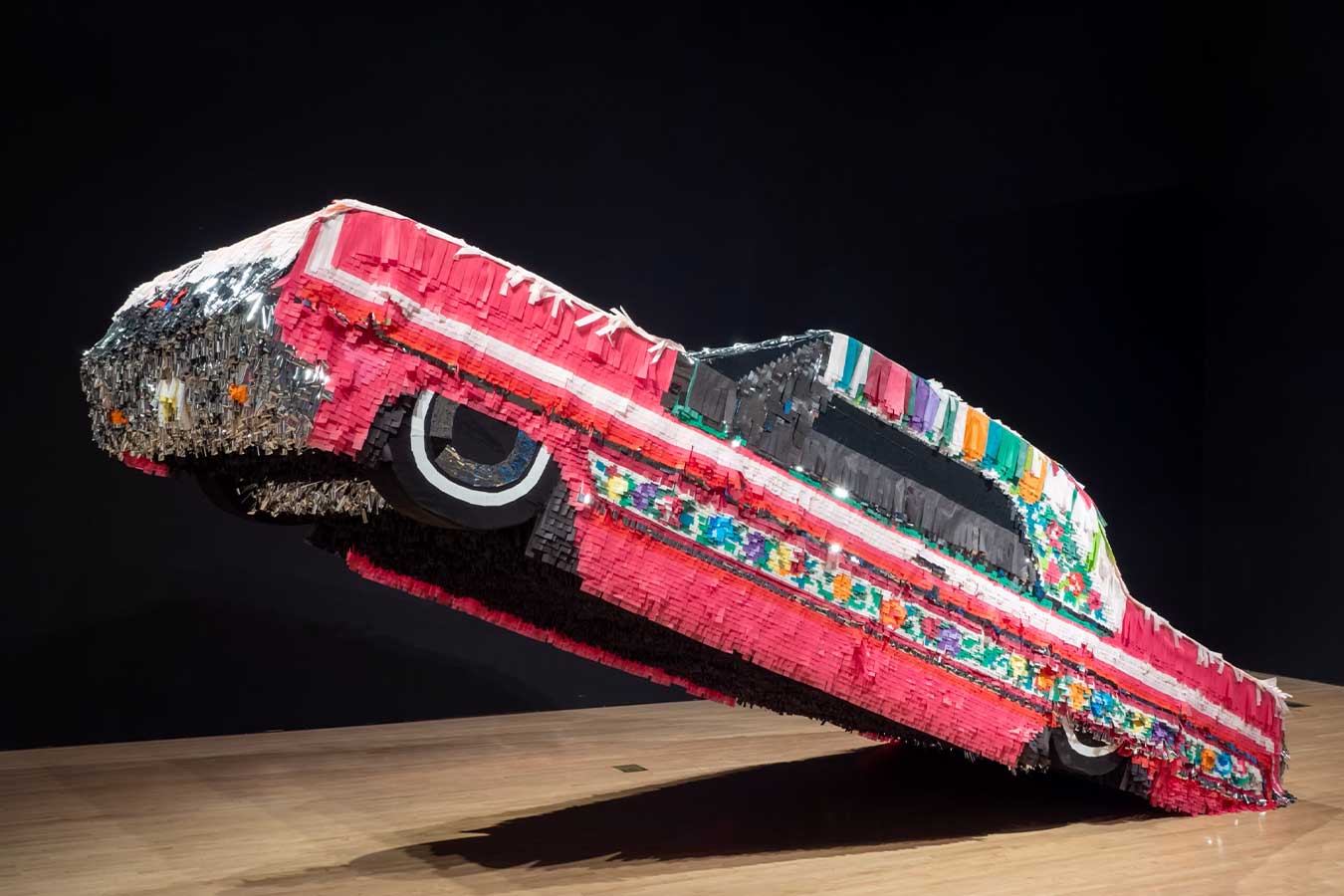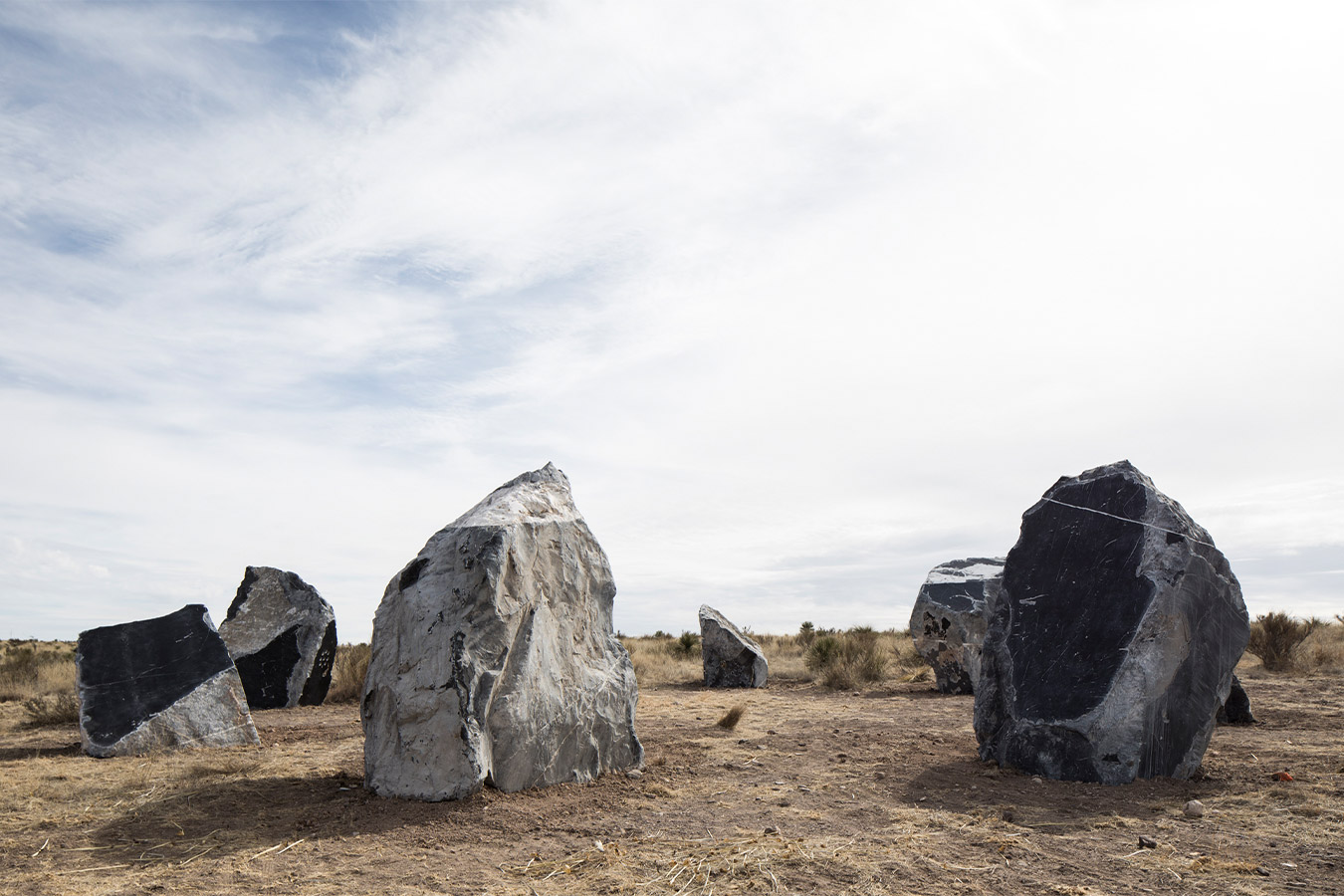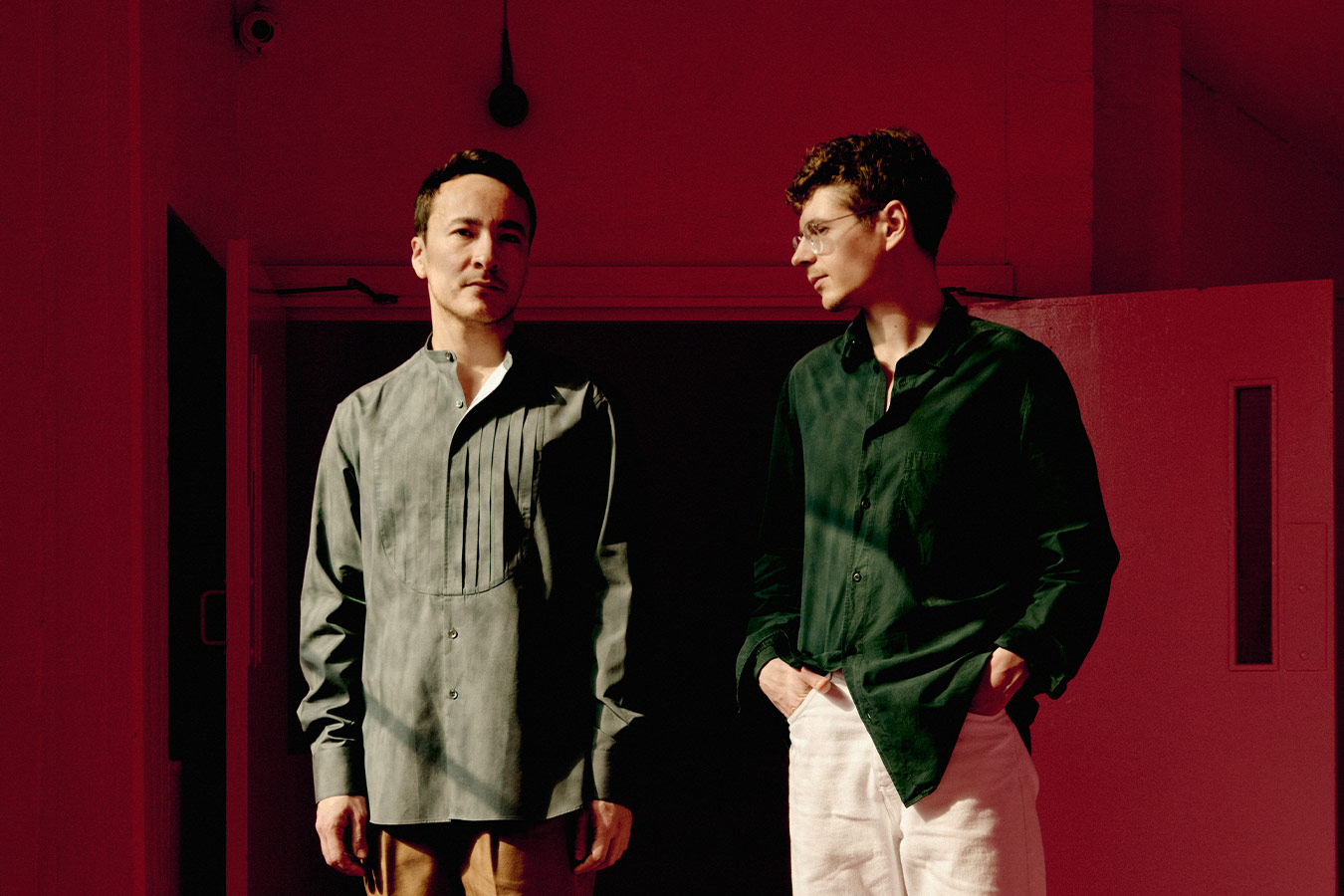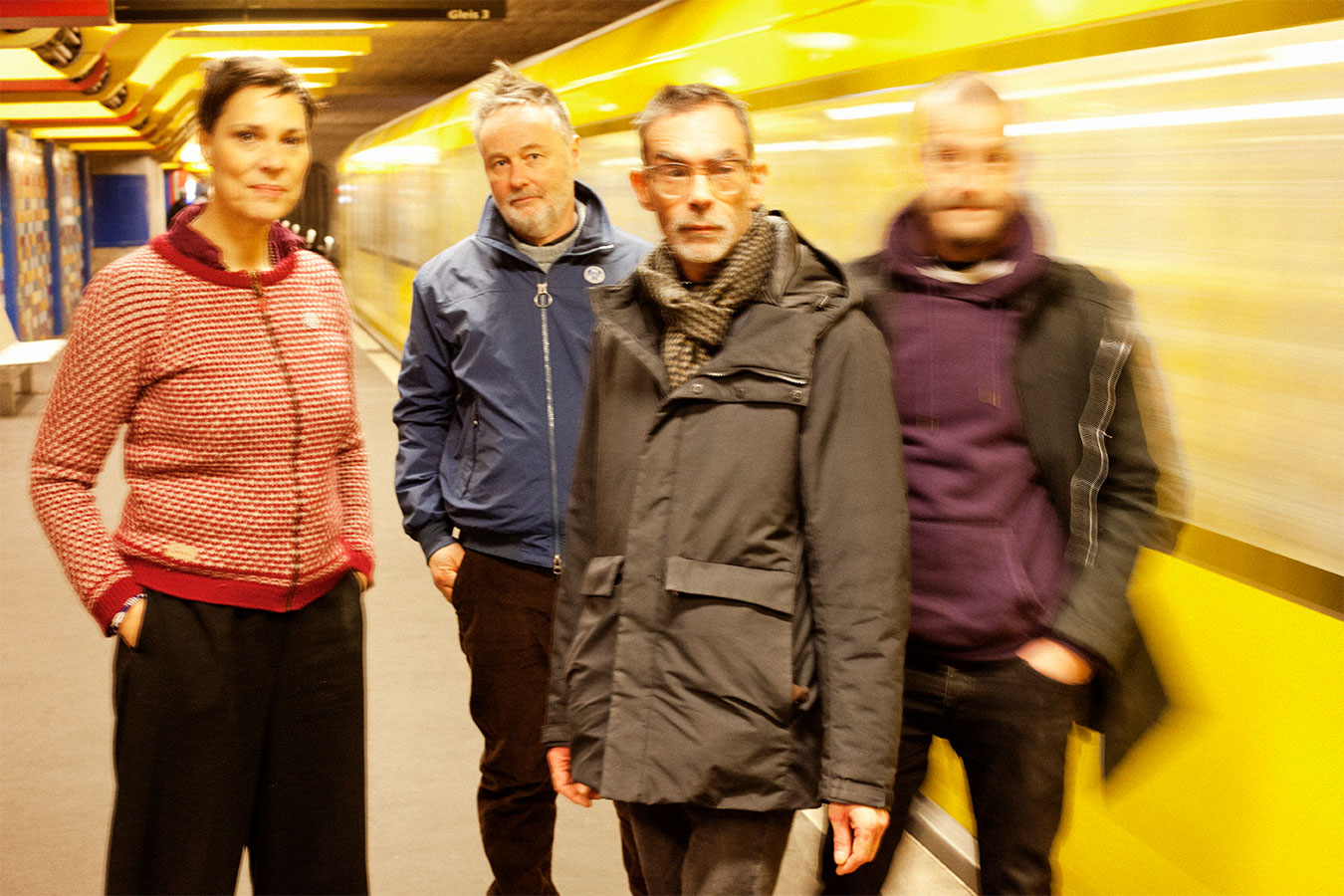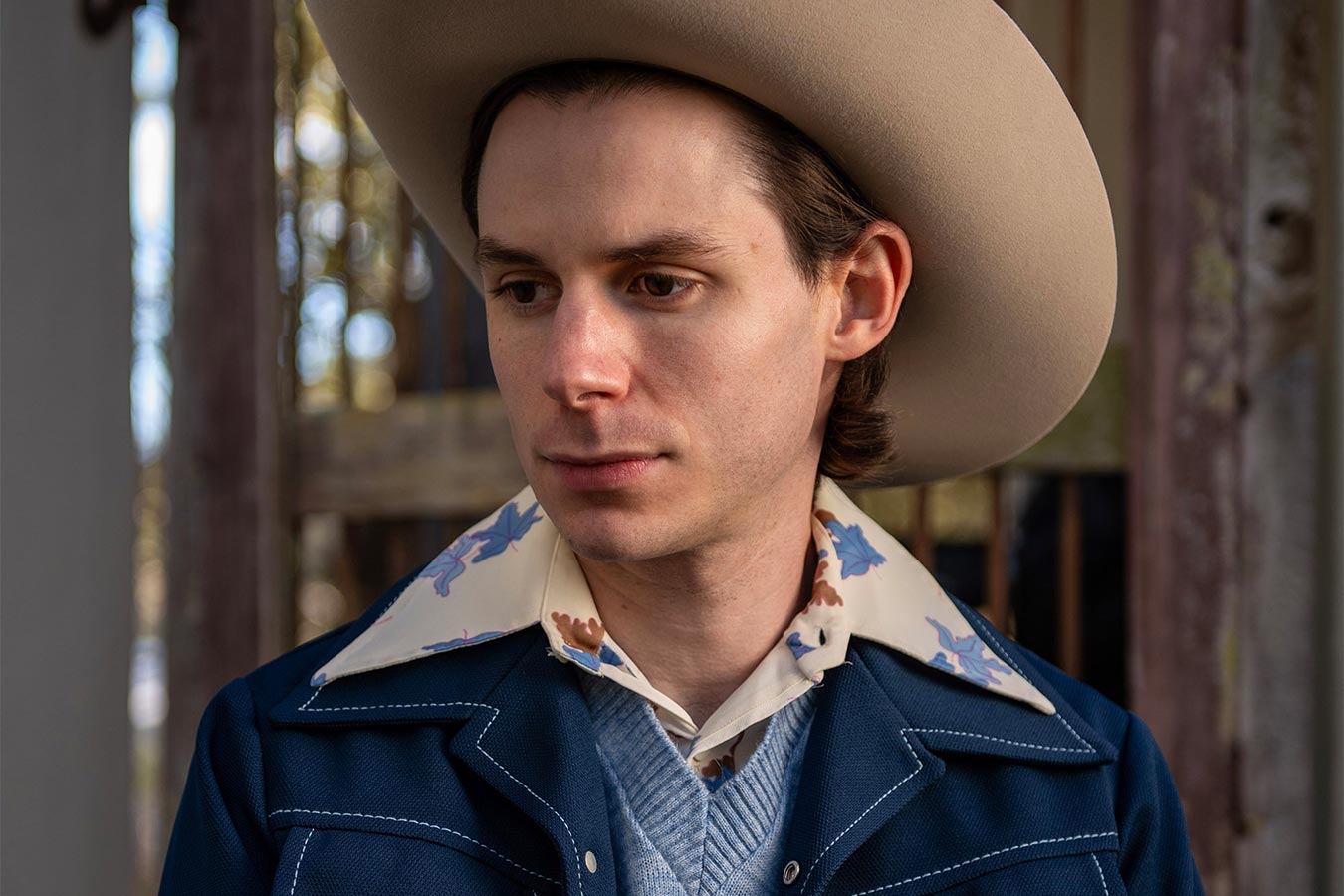Adam Helms on Comic Future
January 30, 2014
 Philip Guston, San Clemente, 1975. To commemorate its closing on February 2nd, we’re presenting this series of essays about the artists featured in Comic Future. Previously we looked at Walead Beshty and Arturo Herrera. In this final essay, Adam Helms offers an overview of the exhibition as a whole. Helms is a New York-based artist whose work was part of the Ballroom Marfa exhibitions You Are Here (2005) and Every Revolution is a Roll of the Dice (2007). Comic Future will travel to the Wexner Center for the Arts in Columbus, Ohio where it will be on view from May 17 through August 3, 2014. ——————————————– The Comic Presence After walking through the exhibition Comic Future, one work of art kept surfacing in my mind: Philip Guston’s San Clemente (1975), the grotesque lumbering caricature of Richard Nixon (fig. 1). In Guston’s later years, this single work (which metastasized into a painting from his drawing series From The Phlebitis Series (1975)) served as Guston’s vehicle for a gesture towards political satire, yet remained in keeping with his quasi-figurative language as a painter. Guston moved from his early years in the ’30s as a social realist into Abstract Expressionism; then finally to a mode of painting and draughtsmanship that incorporated personal narratives and symbols from within a cartoon or ‘comic’ figuration. The only painting of its kind in Guston’s oeuvre, San Clemente suggests that perhaps Guston had doubts about this particular piece. (1) Rather than the ambiguous identities of his Klansmen — or the heads, eyes and feet of his reoccurring figure subjects — this particular piece dealt with direct representation, Guston’s own anger and the politics of the time in which it was painted. San Clemente serves as Guston’s attempt to balance a work as both a history painting and a statement of political satire. In many ways, this Nixon cartoon caricature bridges the gap between Guston’s early social realist concerns — and politics — and the freedom he strove for as a painter breaking new ground rebelling in his departure from abstraction. For Guston’s intentions it straddles the issues of painting as much as it does political cartooning. Guston elevates the political and a mass cultural icon to the level of the sublime. It would be perhaps a form of alliteration to suggest that all of the artists in Comic Future directly reflect the bifurcation of Guston’s piece or intentions, but the spirit of San Clemente echoes throughout the exhibition. Beyond simply a selection of artists that deal with themes of ‘comic abstraction’ or even particular cultural references, Comic Future posits a multitude of questions surrounding political representation, archetypes and visual language, beauty and the grotesque and ultimately: painting and the materiality of objects through the prism of a ‘comical’ gesture. All of the artists represented here look to an appropriated and symbolic language to speak to the time and culture in which they find themselves and in which the works become a reflection or response. Though the intentions of individual artists may vary, the allure and levity of a visual comic language becomes a satirical and subversive conceptual strategy.
Philip Guston, San Clemente, 1975. To commemorate its closing on February 2nd, we’re presenting this series of essays about the artists featured in Comic Future. Previously we looked at Walead Beshty and Arturo Herrera. In this final essay, Adam Helms offers an overview of the exhibition as a whole. Helms is a New York-based artist whose work was part of the Ballroom Marfa exhibitions You Are Here (2005) and Every Revolution is a Roll of the Dice (2007). Comic Future will travel to the Wexner Center for the Arts in Columbus, Ohio where it will be on view from May 17 through August 3, 2014. ——————————————– The Comic Presence After walking through the exhibition Comic Future, one work of art kept surfacing in my mind: Philip Guston’s San Clemente (1975), the grotesque lumbering caricature of Richard Nixon (fig. 1). In Guston’s later years, this single work (which metastasized into a painting from his drawing series From The Phlebitis Series (1975)) served as Guston’s vehicle for a gesture towards political satire, yet remained in keeping with his quasi-figurative language as a painter. Guston moved from his early years in the ’30s as a social realist into Abstract Expressionism; then finally to a mode of painting and draughtsmanship that incorporated personal narratives and symbols from within a cartoon or ‘comic’ figuration. The only painting of its kind in Guston’s oeuvre, San Clemente suggests that perhaps Guston had doubts about this particular piece. (1) Rather than the ambiguous identities of his Klansmen — or the heads, eyes and feet of his reoccurring figure subjects — this particular piece dealt with direct representation, Guston’s own anger and the politics of the time in which it was painted. San Clemente serves as Guston’s attempt to balance a work as both a history painting and a statement of political satire. In many ways, this Nixon cartoon caricature bridges the gap between Guston’s early social realist concerns — and politics — and the freedom he strove for as a painter breaking new ground rebelling in his departure from abstraction. For Guston’s intentions it straddles the issues of painting as much as it does political cartooning. Guston elevates the political and a mass cultural icon to the level of the sublime. It would be perhaps a form of alliteration to suggest that all of the artists in Comic Future directly reflect the bifurcation of Guston’s piece or intentions, but the spirit of San Clemente echoes throughout the exhibition. Beyond simply a selection of artists that deal with themes of ‘comic abstraction’ or even particular cultural references, Comic Future posits a multitude of questions surrounding political representation, archetypes and visual language, beauty and the grotesque and ultimately: painting and the materiality of objects through the prism of a ‘comical’ gesture. All of the artists represented here look to an appropriated and symbolic language to speak to the time and culture in which they find themselves and in which the works become a reflection or response. Though the intentions of individual artists may vary, the allure and levity of a visual comic language becomes a satirical and subversive conceptual strategy.  Works on paper by Sigmar Polke, created between 1964-1969, All works courtesy of Michael Werner Gallery, New York and London, Photography © Fredrik Nilsen The grouping of Sigmar Polke’s 13 works on paper (1964-69), involves an abject and almost proletariat language of comic-like capitalist imagery. This period of Polke’s work was generated during the postwar years of reconstruction in Germany and “apart from their self-critical questionings of Polke’s identity, parodied a taste for the trivial fueled by the banalities of everyday German life in postwar years and ensuing “economic miracle” (2). Polke together with Gerhard Richter saw their work at this time as “Capitalist Realism”. Influenced as a reaction to American Pop, Polke’s works indicate an almost investigative approach towards what he and his colleagues at the time saw as the “authentic cultural phenomenon” of Pop in the imagery of both the mass media and economic system of the West towards an art making moving from the structures of the conventional art of the time (3). In these works Polke remains ensconced between the camp of a Dadaist-like subversion of consumerist imagery and an embracing the visual apparatus of a mass culture that he would help to elevate to ‘high art’.
Works on paper by Sigmar Polke, created between 1964-1969, All works courtesy of Michael Werner Gallery, New York and London, Photography © Fredrik Nilsen The grouping of Sigmar Polke’s 13 works on paper (1964-69), involves an abject and almost proletariat language of comic-like capitalist imagery. This period of Polke’s work was generated during the postwar years of reconstruction in Germany and “apart from their self-critical questionings of Polke’s identity, parodied a taste for the trivial fueled by the banalities of everyday German life in postwar years and ensuing “economic miracle” (2). Polke together with Gerhard Richter saw their work at this time as “Capitalist Realism”. Influenced as a reaction to American Pop, Polke’s works indicate an almost investigative approach towards what he and his colleagues at the time saw as the “authentic cultural phenomenon” of Pop in the imagery of both the mass media and economic system of the West towards an art making moving from the structures of the conventional art of the time (3). In these works Polke remains ensconced between the camp of a Dadaist-like subversion of consumerist imagery and an embracing the visual apparatus of a mass culture that he would help to elevate to ‘high art’.
